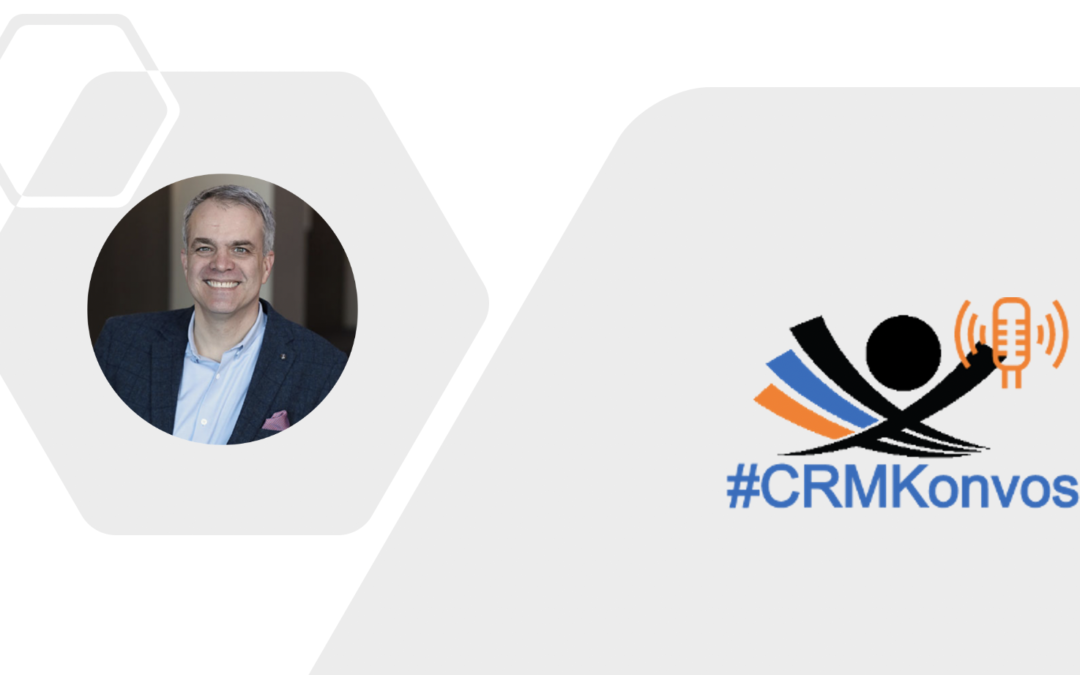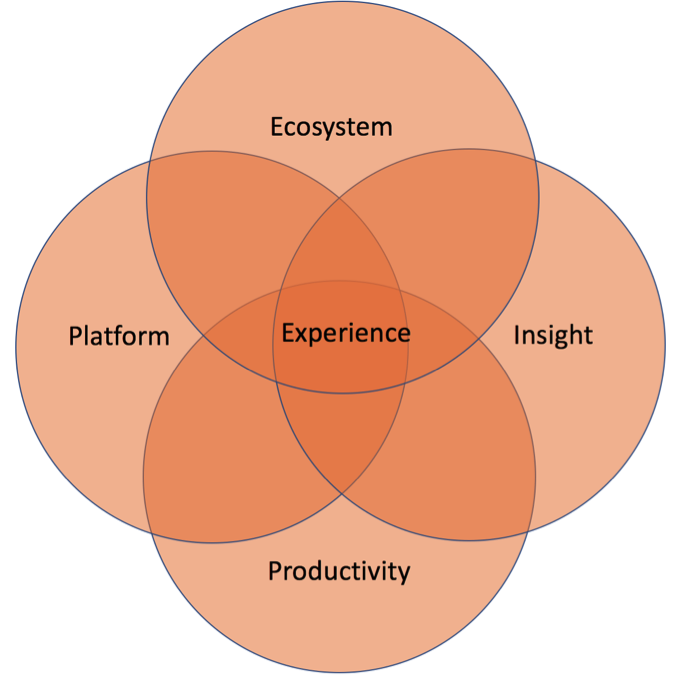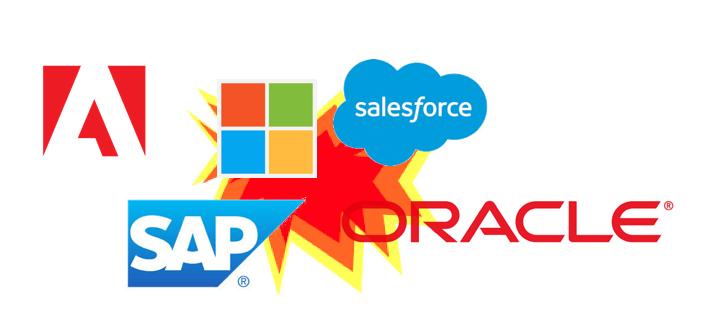
by twieberneit | Dec 13, 2020 | Blog, CRMKonvos |
In this conversation we had the pleasure of talking to Clint Oram, chief strategy officer and one of the founders of SugarCRM. We discussed 2021 trends to find out which ones Cllint does see and, of course, which path SugarCRM is following on its trajectory to becoming a platform player and participating in the #ClashOfTitans. This couldn’t be covered without discussing the reasons for SugarCRM leaving the initially highly successful path of using Open Source Software (hint: there have been very good reasons) and what it entails to become – and stay – successful. Clint related a very valuable personal story here to make his point: It is not only about having the right idea. There is so much more to it – but watch it in the CRMKonvo. It being the season, we also asked him about which trends he sees and what customers are asking for. Good answers here. The worst word of the year? “New normal”. Well, I cannot but agree here … although … something has changed, hasn’t it? Enjoy this awesome CRMKonvo....

by twieberneit | Dec 2, 2019 | Blog |
After having covered some press releases about new releases and commenting some interesting organizational changes it is time to have a look at another topic – the need for consistency in a suite of cloud products. Consistency not only in the most obvious part of a family of products and solutions – the user interface – but the more important aspect of consistency, namely the data model. If you wonder how this relates to customer experience I invite you to read on. This post is actually spurred by a brief conversation that I had with Jon Reed of Diginomica about this very topic during one of the recent CRM Playaz episodes. Btw, if you do not yet listen in to the LinkedIn conversations of CRM Playaz Paul Greenberg and Brent Leary, discussing important developments and current events in the world of CRM – then you should. Really! But I digress. Back to the topic. The question is about whether it is necessary to have a unique data model or not. And this question might be answered differently, based upon the definition of ‘data model’. There is no doubt that a unique data model across applications is very helpful, actually a necessity. Where there is doubt, is whether this data model needs to be defined on database level or not in order to be really helpful. My point of view is that it does not need to be defined on database level. This point of view might be contradicting some ‘common sense’ wisdom and the strategy that some very successful companies are pursuing, including Oracle – as it seems –...

by twieberneit | Sep 11, 2018 | Blog |
More Food for Thought In the last article Clash of Titans – Microsoft and SAP weigh in of this little series, I discussed the strategy of two of the big four and how they are positioned in the platform play of the business software titans – and others. This article covers the other two: Oracle and Salesforce. These business software vendors are competing in a market that is changing – commoditizing – at a fast rate towards an experience market, and probably beyond, if I follow the argumentation and thoughs of CRM godfather and friend Paul Greenberg. Business application vendors can stay really successful only if they morph into platform players. And this platform is more than just a technology platform, but encompasses four dimensions. The four dimensions that are paramount to be able to deliver great engagements that result in lasting positive experiences are Platform (IaaS/PaaS) Ecosystem Insight Productivity In this article I look at Oracle and Salesforce and how they position themselves in this game of thrones. But now, without further ado, let’s dig into the topic. Oracle Since the launch of what originally was project Fusion and now is Oracle CX, the company has done a remarkable pivot from being an on premise company to becoming a cloud company. The company has its strength in being a full stack provider with a full range of business applications. However, its main strenght is owning the gold standard database engine that runs the majority of business workloads worldwide. From its overall technological profile one could position Oracle somewhere between SAP and Microsoft as it with Open Office also...

by twieberneit | Aug 28, 2018 | Analysis, Blog |
A little recap As it has been some time since I published Clash of Titans – Platform Play, the first part of this little series, let me start with a little recap. The business applications market, especially the CRM market, is evolving fast. CRM has morphed from concentrating on transactions to become an enabler of engagements. Engagements in turn result in experiences. And positive experiences are what companies want to achieve. In a digital world this is possible only if companies rely on a foundation, a (technical) platform. Becoming the provider of the dominant technical platform therefore has become the main goal of of the big business software vendors. However, even governing a great technical platform is not enough. Software vendors that want to be successful platform players need to be able to deliver on four areas to succeed: Platform (IaaS/PaaS) Ecosystem Insight Productivity Only if they deliver on all four aspects are ‘platform players’ able to provide their customers with what they need to involve themselves in digital engagements that result in sustainably positive experiences. I will look at how the big four are measuring up in this and the next article of this little series. Microsoft and SAP will be the starters. Then I will look at Oracle and Salesforce. I might conclude with some surprise additions. But let the games begin! Microsoft Microsoft is the (not so, if you look sharply) hidden champion of this game. Actually, I think that Microsoft is the 800 pound gorilla in this game. It is Microsoft’s objective to become the fabric that connects enterprises of all sizes with their stakeholders,...

by twieberneit | Apr 12, 2018 | Analysis, Blog |
The News SAP has recently announced the completion of the acquisition of Callidus Software, Inc. Unsurprisingly, CallidusCloud’s assets shall get consolidated under the umbrella of SAP Hybris leveraging the customer relationships that the existing leadership team, which shall continue to lead their team, has built. CallidusCloud is a leader in sales performance management and in the CPQ area and also has some more interesting assets, notably their contract lifecycle management offering, which ties nicely into the CPQ piece. The CPQ software has a (first) working integration into SAP’s Cloud for Sales, which got announced in September 2017 and that gets continuously improved. One seemingly simple, yet powerful feature of the CPQ software is the indicator for margin health that gets updated as a sales representative works upon a quote. The software’s ability to generate multi-level workflows based upon changes of prices or contract clauses creates an efficient workflow, which includes the customer when using the portal based delivery of documents during negotiations. All in all the software is geared towards making the sales process efficient. CallidusCloud’s solutions shall be sold standalone as well as integrated into SAP solutions and a roadmap shall get announced at SAPPHIRENOW in June 2018. I have done a brief initial analysis of this acquisition right after the plan got announced and followed up with some musings about how CPQ can be delivered in a customer experience fashion. The Bigger Picture With CallidusCloud’s CPQ SAP now has at minimum three configuration engines that can get used by customers: ERP Variant Configurator SAP Hybris CPQ CallidusCloud CPQ A fourth one comes into the picture if I...






